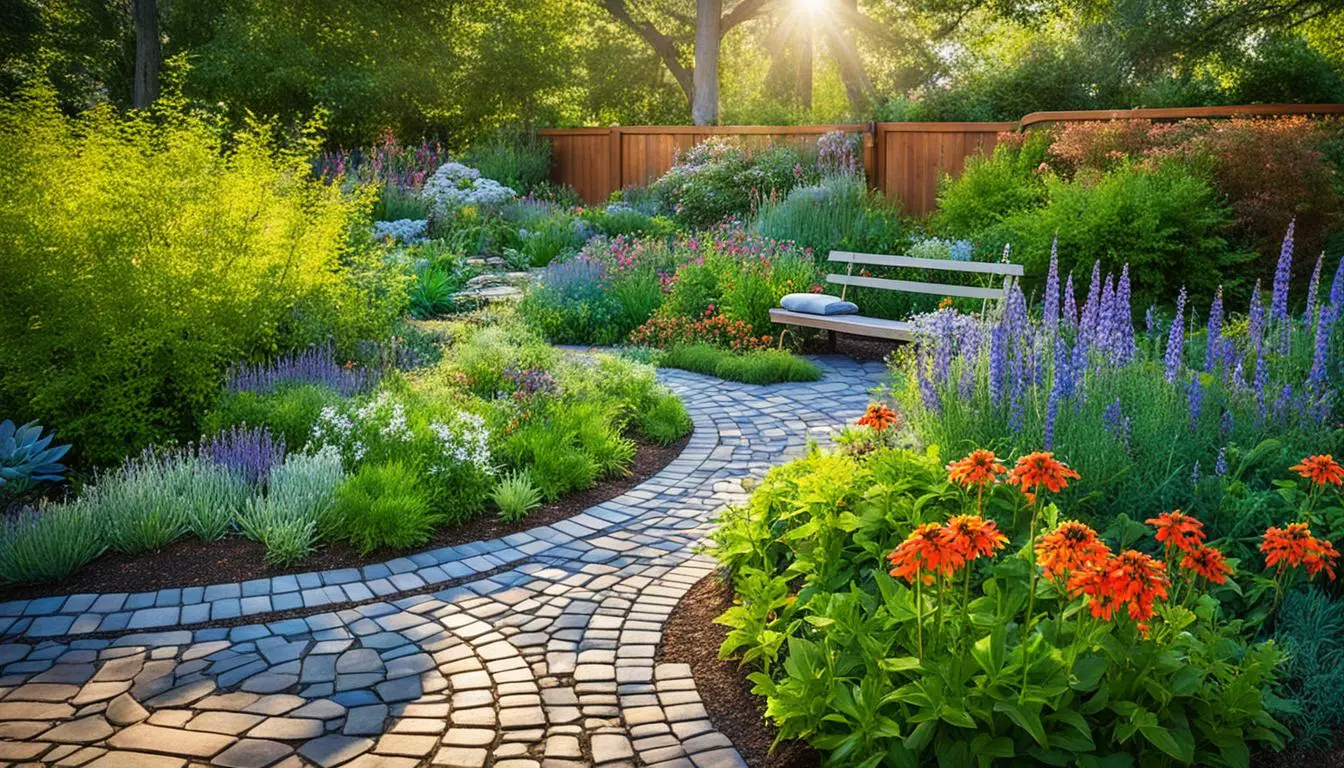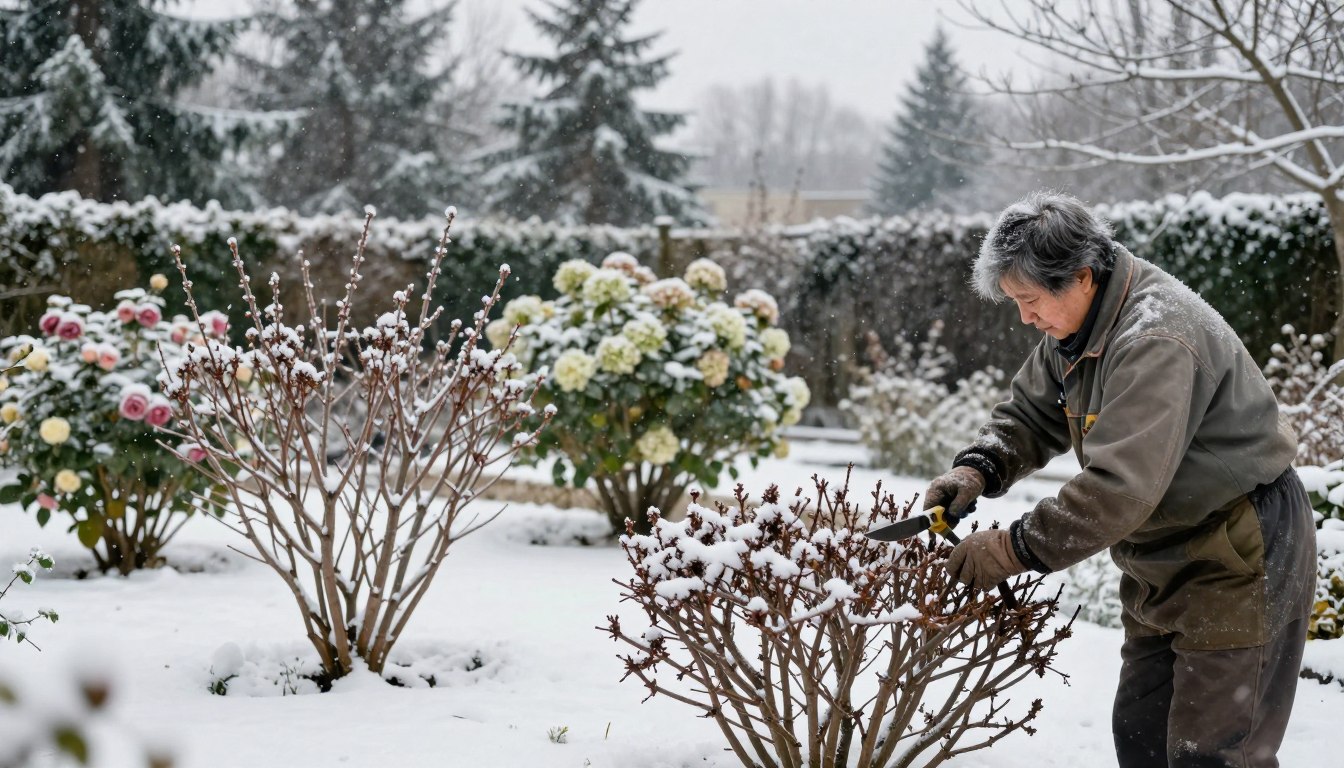Gardening fans, picture a full, lively outdoor area that fits in perfectly with its surroundings. You can bring this dream to life by adding native plants to your design. These plants are local to a certain area and shine with special beauty. They also give many ecological perks, making them ideal for anyone caring about the planet.
This article focuses on the beauty and benefits of using native plants. We will talk about why choosing plants that are from your area is important. It’s good for a garden that doesn’t need a ton of work, helps local plants and animals, and looks great. Learn how to pick the best native plants, create a garden that is easy on the eyes and on the planet. Also, we will discuss ways to care for it without harsh chemicals. By the end, you’ll want to turn your outdoor space into a place that is bursting with life.
Key Takeaways
- Native plants are used to the area’s weather and ground, needing less care than other plants.
- Adding these local plants to your garden helps local animals and promotes plant variety.
- Picking the right local plants makes your garden not just beautiful but also easy to maintain and eco smart.
- An eco-friendly garden with native species acts like a mini natural environment, helping save local plants and animals.
- Switching to a garden of native plants means making a space that is good for the environment and the community around you.
The Beauty of Native Plants: Incorporating Them into Your Garden
Native plants are those that have evolved naturally in a specific area over time. They’ve adapted to the local climate, soil, and wildlife. These indigenous species bring a unique beauty. They blend naturally with the environment, making your garden look beautiful and ecologically-balanced. By planting native flora, you help not only in creating a beautiful garden but also in supporting the local ecosystem.
The beauty of native plants is they do well with very little care. They need less water, fertilizer, and effort to keep them healthy than other plants. This makes them perfect for your garden’s health and the environment. These plants also help support local animals by offering them food and shelter in your wildlife-friendly gardens.
Planting native plants enhances the beauty of your garden. It also helps the environment. You are contributing to the protection of biodiversity and natural habitats in your local region. This support especially helps with water conservation and caring for pollinators. As a result, your garden becomes a healthy, attractive place to spend time.
Understanding the Value of Native Plants
Native plants offer many upsides to both the environment and your garden. They are indigenous species familiar with local climates and soils. This means they need less water, fertilizer, and maintenance than plants from other areas.
Growing native plants allow you to save water. It also cuts down on the use of chemicals. Plus, it helps local wildlife and encourages biodiversity. These plants are easy to care for and fit their surroundings well.
Environmental Benefits of Native Species
Native plants are crucial for boosting regional biodiversity and natural habitats. They offer food and shelter to pollinators, birds, and other wildlife. This keeps the whole ecosystem in balance.
Adding native plants to your garden improves the local environment’s health. It supports water conservation and keeps habitats natural.
Low-Maintenance Gardening
Native plants are great for low-maintenance gardening. They need less water and care because they fit right into their surroundings. Choosing them can make your outdoor area both beautiful and friendly to the environment.
This approach to gardening is ecofriendly and doesn’t need a lot of time or effort. It also makes your garden life easier. So, it’s perfect for people who are busy or want to lower their environmental impact.

Choosing the Right Native Plants
When you add native plants to your garden, it’s key to know what grows well in your area. Every region has its own unique climate and soil. These are perfect for some native plants but not for others.
So, take the time to find out about the plants that do best where you live. Think about the sun, soil, and water each plant likes. This helps you pick the best native plants for your garden.
Identifying Your Region's Native Flora
The first step to a great garden is knowing which native plants to choose. Start by looking up local flora in guides or online. You can also ask local gardeners or conservation groups.
This info is crucial for picking plants that need less water and care. It’s all about finding plants that are at home in your area.
Considering Soil, Sunlight, and Water Needs
After finding the right native plants, think about their needs. Some plants like certain soils, while others prefer sunny spots or shady areas. They also vary in how much water they need.
Match the plants to your garden’s conditions. This makes a garden that’s beautiful, natural, and easy to maintain. It also helps the local ecosystem thrive.

Designing a Native Plant Garden
To turn your garden into a native plant haven, careful design and planning are needed. The goal is to copy natural habitats. This supports local wildlife and increases biodiversity. Grouping plants by their needs, adding water features, and offering animal shelters and food are key steps.
Creating Natural Habitats
Focusing on native species and natural elements in design makes your garden beautiful and balanced. Choose plants that don’t need much water and suit your area’s climate and soil. Use organic gardening for a natural touch. This makes your garden a place for wildlife, helping biodiversity and conservation efforts.
Adding natural features like rocks, logs, or water can attract more wildlife. By giving them food, shelter, and safe spots to nest, your garden becomes welcoming to birds, insects, and small animals. This boosts the biodiversity in your area.
FAQ
What are the benefits of incorporating native plants into my garden?
Native plants provide many good things for your garden. They are used to the local weather and soil, so they use less water and maintenance. This means you save water, need fewer chemicals, and help the area’s plants and animals.
How do I identify the native plants that are well-suited to my region?
Start by learning what plants are native to your area. Check your area’s climate, soil, and unique features. Focus on plants that work well with your local conditions, such as those that need the same sunlight and water.
How can I design a native plant garden that is visually appealing and ecologically-balanced?
To make a garden attractive to both you and local wildlife, mimic natural environments. Group plants that have the same needs together. Add features like ponds and provide places for animals to live and eat. This balances beauty with nature.
What are some low-maintenance and drought-tolerant native plant options for my garden?
Many native plants handle dry weather well and need little care. Some examples are Coneflowers and Butterfly Milkweed. They don’t need much watering, helping you have an eco-friendly garden without a lot of work.
How can I support local biodiversity and wildlife by incorporating native plants?
Native plants are key to helping local wildlife and plants. They attract bees, birds, and other animals because they offer the right food and shelter. By planting them, you build a home for many local creatures, helping the ecosystem thrive.






